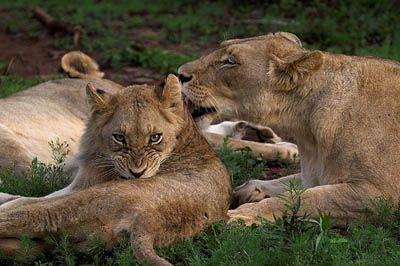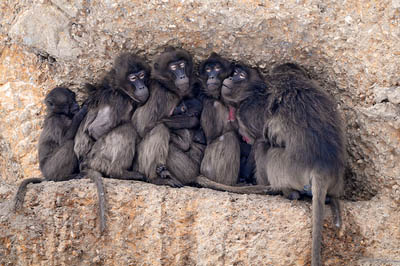 Grrrrr! Credit: Brian Scott |
Colin Powell’s appearance on State of the Union recently stirred up many healthy debates on Iraq, Obama’s presidency, and Sotomayor, but I found his thoughts on American families most interesting, especially the following:
And I’m kind of a simple guy on things like this, John. I watch National Geographic and Animal Planet, and I love to watch lion shows or tiger shows, where a cub is born. And there is the mother and the father.
The father may be away at a distance, but he’s providing protection for the family. And the family unit knows exactly how much a cub is able to do at what age. And until you‚re 4 months old, you never leave the mom. And then when you’re 6 months old, you can go out a little way, but you’ll get smacked back if you ever exceed the limits of which you’re capable of managing.
Are we the only mammal who thinks we don’t have to follow these rules? That we don’t have to pass on a thousand previous generations of experience? That’s not acceptable.
Powell is a powerfully persuasive speaker with a great deal of integrity. Earlier he had mentioned children’s need to belong to a group, be it a family or a gang. I admire his comparing human families to a lion pride and specifically referring to us as “mammals,” who are subject to the same basic needs and instincts.
It’s dangerous when humans try to distinguish ourselves from the animal kingdom, as somehow above it. Philosophers and theologians have spent millennia trying to find a solid argument for why we are not animals, but this line of thought abandons all we may learn by studying our animal nature. Powell has deep insights into what motivates us by watching Animal Planet, and we have much to learn about ourselves by observing our primate relatives on the evolutionary tree.
Powell’s example of the lion pride resembles hierarchies found in ape and monkey societies. In 1925, the London Zoo put together a baboon exhibit, bringing 99 male baboons and 36 females into an enclosure where each had about 60 square feet of personal space. Six years later, 35 of the males and five of the females were still alive. The remaining females were removed for their own safety, as fighting among the male baboons had killed off much of the zoo’s population.
The incident was seen as reinforcing the idea of animal savagery, that such violence was in the baboons’ nature and humans were above such baser instincts, but if such behavior were to occur in the wild, baboons would quickly be driven to extinction. Eventually, a more rational explanation came to light, as Carl Sagan and Ann Druyan elucidate:
What had gone wrong on Monkey Hill? First, almost all of the baboons introduced to the “colony” were unknown to one another. There was no long-term mutual habituation, no prior establishment of dominance hierarchies, no common understanding in these harem-obsessed males of who was to have many females and who none at all. No kinship-based female dominance hierarchy had been established.
Baboons in the wild are born into a cultural context, where there are adults with social relationships already worked out. The London Zoo’s baboons were all thrown in together at random, stripped of their social network, and forced to work out a completely new social hierarchy on the spot, resulting in unconscionable acts of mortal violence. As with Powell’s lion pride example, baboon children are part of a culture, a social network and they learn their place in it, the way it works, and how they may rise in status within it.
 Piled baboons Credit: Tambako the Jaguar |
There are examples of patriarchal and matriarchal social hierarchies in primate societies, each conferring the advantage of stability on the whole. Rather than look down on the animal kingdom as something meant for subjugation, we can see the importance of family and community for providing social stability from which we all benefit.